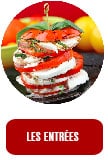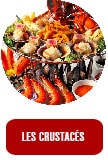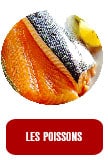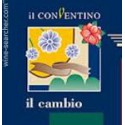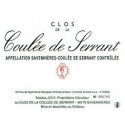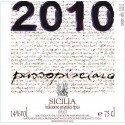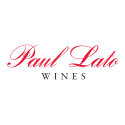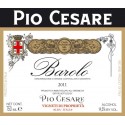Aucun produit
Liste des domaines et châteaux :
-
Albert Mann
"Maurice et Jacky Barthelmé cultivent en biodynamie un magnifique vignoble réparti sur les meilleurs terroirs entre Wettolsheim et Kientzheim, exploitant entre autres les grands crus Furstentum, Schlossberg ou le Hengst. Le respect du raisin au cours de la vinification donne des cuvées d'une grande constance quel que soit le millésime, aux bouches nettes, droites et précises (...)"
Source: Guide Bettane & Desseauve des Vins de France
-
Bodegas Roda
La bodega Roda se trouve à Haro, au cœur de l'appellation DOCa Rioja.
Le domaine a été fondé en 1987 par Mario Rotllant et Carmen Daurella, qui l'ont baptisé ainsi à partir des deux premières lettres de leur nom de famille.
-
Chateau Magrez Fombrauge
Autre propriété de Bernard Magrez dont la qualité a littéralement explosé ces derniers millésimes. Selon Parker, depuis la fin des années 1990, les vins sont chaque année la révélation du millésime.
Enfin, le château élabore la cuvée d’exception Magrez Fombrauge est issue de la toute meilleure parcelle de la propriété et vinifiée selon la méthode bourguignonne.
Production : 6’000 bouteilles ;
Superficie : 3 ha ;
Encépagement : 80% merlot, 20% cabernet franc;
Meilleurs millésimes : 2010, 2009, 2005, 2003, 2001, 2000.
-
Clos L'Eglise
Production : 20’000 bouteilles ;
Superficie : 6 ha ;
Encépagement : 60% merlot, 40% cabernet franc;
Meilleurs millésimes : 2010, 2009, 2005, 2001, 2000, 1998.
-
Didier Dagueneau
Didier Dagueneau était un extrémiste de la qualité. Il est malheureusement mort en 2008 dans un accident d’Ulm.
Aujourd’hui, ses enfants ont repris le flambeau et assurent dignement la destinée de ce domaine unique où le sauvignon se présente comme une référence mondiale.
-
domaine Siro Pacenti
Le domaine Siro Pacenti permet de découvrir un Brunello harmonieux, expressif, à la texture riche. Le vin est assemblé à partir de parcelles situées au nord (Pelagrilli) et au sud (Piancornello) de l’appellaton. Chaque vigne est vinifiée séparément, et l’élevage prend place en barriques de 225 litres.
-
Falesco
Les frères Cotarella ont fondé la cave Falesco à Montefiascone, en Lazio afin de récupérer les anciens vignobles de la région.
Falesco propose des assemblages de cépages autochtones peu connus comme l'aleatico, le trebbiano, ou le verdicchio.
Falesco, c’est enfin la propriété de Ricardo Cotarella, célèbre wine maker et conseiller des plus grands domaines italiens.
-
Il Conventino
Il Conventino produit notamment des rouges puissants (à servir sur cèpes à la bordelaise).
Ce domaine a récemment reçu le classement le plus élevé du célèbre magazine italien Gambero Rosso.
-
Nicolas Joly
Propriété exclusive de la famille Joly, le vignoble de la Coulée de Serrant constitue à lui seul une appellation contrôlée de 7 hectares seulement.
La biodynamie a été implantée en 1980 et depuis 1984 la totalité du vignoble en bénéficie. Aucun produit chimique de synthèse, acaricide, pesticide, systémique, désherbant, nitrate n’est utilisé depuis cette date.
Le Clos de la Coulée de Serrant est une référence internationale et elle est régulièrement citée dans les guides de référence (Robert Parker, la Revue du Vin de France, Bettane et Desseauve).
-
Passopisciaro
La cave Passopisciaro a été fondée en 2000 par le producteur de vin, originaire de Toscane, Andrea Franchetti, connu pour les vins extraordinaires du domaine toscan Tenuta di Trinoro.
La cave est située sur le côté nord de l'Etna, a 1000 mètres d'altitude.
-
Paul Lato
L’histoire de Paul Lato est aussi exceptionnelle que ses vins.
Né en Pologne, Lato était un sommelier à succès à Toronto, mais il rêvait de devenir vigneron. Après avoir brièvement travaillé pour Jim Clendenen (propriétaire du célèbre pionnier du pinot californien Au Bon Climat) et comme rat de cave chez Bien Nacido, Lato a commencé à élaborer ses propres vins en 2002 avec à peine 500 caisses de pinot noir et de syrah (deux vins notoirement difficiles à travailler).
Deux décennies plus tard, y compris une rencontre fortuite avec Robert Parker, Paul Lato Winery est désormais largement considéré comme l'un des principaux producteurs californiens de cépages bourguignons et rhodaniens.
Produits à partir d'un certain nombre de superbes vignobles de la côte centrale de Californie, les vins de Lato obtiennent régulièrement des notes exceptionnelles de la part de nombreux critiques les plus vénérés du monde du vin (dont Jeb Dunnuck et Antonio Galloni).
-
Pio Cesare
Pio Cesare figure parmi les plus grandes maisons reconnues mondialement lorsqu’on parle de Barolo. Histoire, maîtrise et constance.
On parle ici d’une maison de grande classe. Beaucoup de grands vins y sont fabriqués.
100% en stock
Tous les produits mis en vente sur notre catalogue sont en stock.
Livraison rapide
Votre commande sera expédiée en 48h dans un emballage prévu à cet effet.
Frais de port offerts
Les frais de port sont offerts dès 1'000 CHF d'achat
Retrait gratuit à genève
Votre commande peut être retirée à votre convenance à notre boutique à Genève ou dans nos caves de Carouge
Fidélité récompensée
2 % de remise
